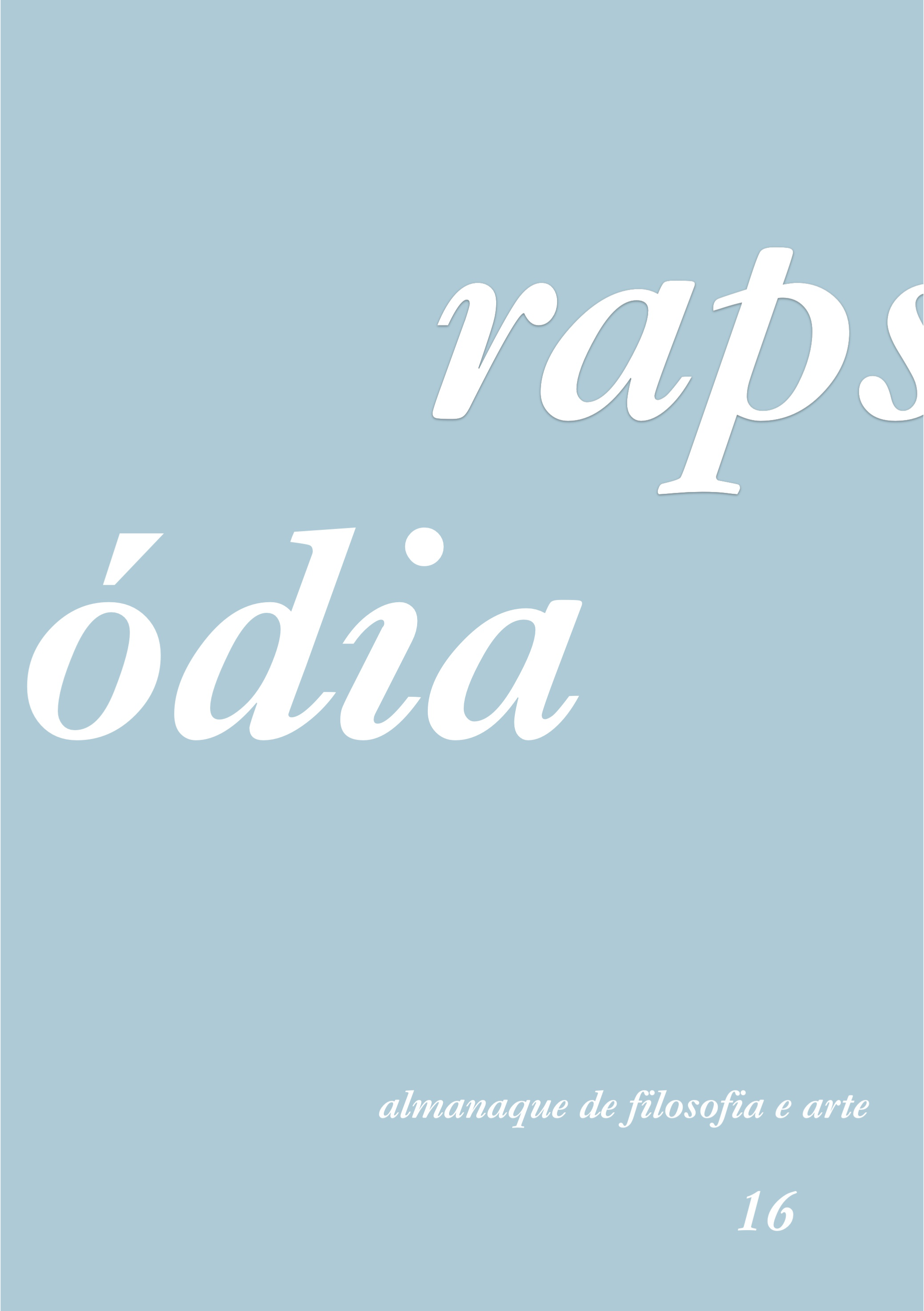Caminhando em solo clássico – Karl Philipp Moritz em Roma: literatura e imaginação histórica
DOI:
https://doi.org/10.11606/issn.2447-9772.i16p126-151Keywords:
Moritz, Aesthetics, Landscape, Antiquity, EnlightenmentAbstract
In this article we address aspects of the thought and historical sensibility of Karl Philipp Moritz. Having it in mind, we take as a guideline the topos of the “classical ground” emphasized by Moritz in the book A Journey of a German to Italy from 1786 to 1788: a travel diary in letters (Reisen eines Deutschen in Italien in den Jahren 1786 bis 1788 : Reisebericht in Briefen). In the context of the formative trips to Italy undertaken in the 1780’s by German intellectuals and poets, the term “classical ground” (klassische Boden) denotes a relationship that Moritz – as well as Goethe, Herder and other authors of travel narratives of that age – establishes between the literary imagination and the places in which the events portrayed by the ancient literature took place. According to Moritz, the experience of reading an ancient author (or remembering this reading) in the place where the facts portrayed would have occurred would be able to activate, through “imagination”, the historical memory, giving to the past a living presence. By evoking the experience of the “classical ground”, Moritz establishes a dialectic between imagination and place, literature and landscape, language and “ground”. He notes that in modern Rome the ancient persists imbricated with the modern, whether in the landscape (which includes the architecture, monuments, ruins, the urban layout of the city, and the Italian nature), or in the Roman “people” (in their linguistic and cultural habits, political and religious ceremonies and institutions). It is important for him, finally, to think to what extent, starting from these living remains, the Antiquity could be (re)visited and purified from its imbrications with the modern.
Downloads
References
ADDISON, J. A letter from Italy, to the Right Honourable Charles, Lord Halifax. Londres: H. Hills, 1709. Disponível em: https://rpo.library.utoronto.ca/content/letter-italy. Acesso em: 08 jun. 2022.
BERGHAHN, C.-F. “Aesthetic and anthropology in Karl Philipp Moritz’ Italian writings”. In: ΑΝΘΟΥΣΑ, n. 55, 2005. p. 25-43. Disponível em: https://www.researchgate.net/publication/297502028_Aesthetic_and_anthropology_in_Karl_Philipp_Moritz'_Italian_writings_Travels_of_a_German_in_Italy_-_God's_teachings_-_ANTHOUSA. Acesso em: 10 jun. 2022.
BESSE, J.-M. Ver a Terra. Seis ensaios sobre a paisagem e a geografia. Tradução de Vladimir Bartalini. São Paulo: Perspectiva, 2014.
BORNHEIM, G. (1993) “Introdução à leitura de Winckelmann”. In: WINCKELMANN, J. J. Reflexões sobre a arte antiga. Porto Alegre: Movimento, 1993.
CARENA, C. “Ruína/Restauro”. In: Enciclopédia Einaudi. Tradução de Suzana Ferreira Borges. Lisboa: Imprensa Nacional/Casa da Moeda, 1984.
ELIAS, N. O processo civilizador. Tradução de Ruy Jungmann. Rio de Janeiro: Zahar, 1990.
FERREIRA NETO, O. M. O pensamento histórico do jovem Herder: crítica ao Esclarecimento e a formação da nação (1765-1774). Tese (Doutorado em História Social) – Depto. de História, FFLCH – USP, São Paulo, 2018.
FICHTE, J. G. Addresses to the german nation. Tradução de Reginald Foy Jones, George Henry Turnbull. Whithorn: Anodos Books, 2017.
GADAMER, H.-G. Verdade e método I. Traços fundamentais de uma hermenêutica filosófica. Tradução de Flávio Paulo Meurer. Petrópolis: Vozes, 2016.
GOETHE, J. W. v. Conversations with Eckermann (1822-1832). Tradução de John Oxenford. São Francisco: North Point Press, 1984.
GOETHE, J. W. v. Erotica e curiosa. Tradução de João Barrento. Lisboa: A páginas tantas, 1986.
GOETHE, J. W. v. Selected verse. Tradução de David Luke. Londres: Penguin, 1986. (Edição bilíngue).
GOETHE, J. W. v. Viagem à Itália (1786-1788). Tradução de Sérgio Tellaroli. São Paulo: Companhia das Letras, 1999.
HÖLDERLIN, F. Hipérion. Tradução de Marcia de Sá Cavalcante. Petrópolis: Vozes, 1994.
MENESES, U. T. B. O objeto material como documento. Transcrição de aula ministrada no curso “Patrimônio cultural: políticas e perspectivas” organizado pelo IAB/CONDEPHAAT. 1980. Disponível em: https://edisciplinas.usp.br/pluginfile.php/5577860/mod_resource/content/1/MENESES%2C%20Ulpiano%20Bezerra%20de.%20O%20objeto%20como%20documento.%201980.pdf. Acesso em: 10 jun. 2022.
MORITZ, K. P. Viagem de um alemão à Itália: 1786-1788: nas cartas de Karl Philipp Moritz. Tradução de Oliver Tolle. São Paulo: Humanitas/Imprensa Oficial do Estado de São Paulo, 2007.
MORITZ, K. P. Reisen eines Deutschen in Italien in den Jahren 1786 bis 1788: Reisebericht in Briefen. Chicago: E-artnow, 2015.
POMIAN, K. “Coleção”. In: Enciclopédia Einaudi. Tradução de Suzana Ferreira Borges. Lisboa: Imprensa Nacional/Casa da Moeda, 1984.
REDFIELD, M. “Imagi-Nation: The Imagined Community and the Aesthetics of Mourning”. In: Diacritics, v. 29, n. 4, Baltimore, inverno de 1999, p. 58-83.
SCHREIBER, E. The topography of modernity: Karl Philipp Moritz and the space of autonomy. Ithaca/Nova York: Cornell U.P., 2012.
SELA-SHEFFY, R. The rise of a new intellectual elite and the promotion of a new cultural ethos. 1999. Disponível em: http://www.tau.ac.il/~rakefet/papers/lit-dynamik/chap4--Elite%5Beng%5D.pdf. Acesso em: 25 set. 2017.
Downloads
Published
Issue
Section
License

This work is licensed under a Creative Commons Attribution-NonCommercial-ShareAlike 4.0 International License.



